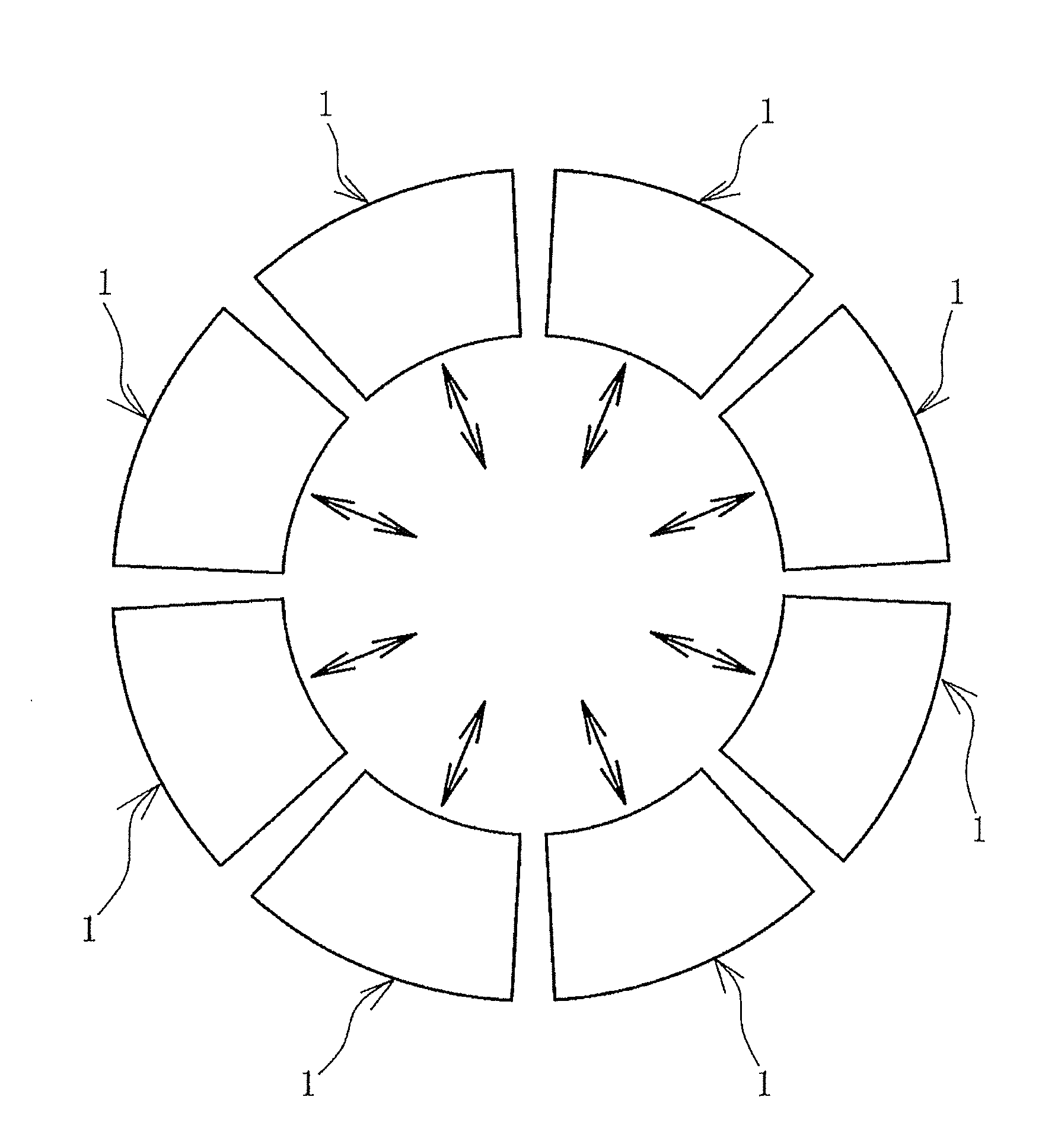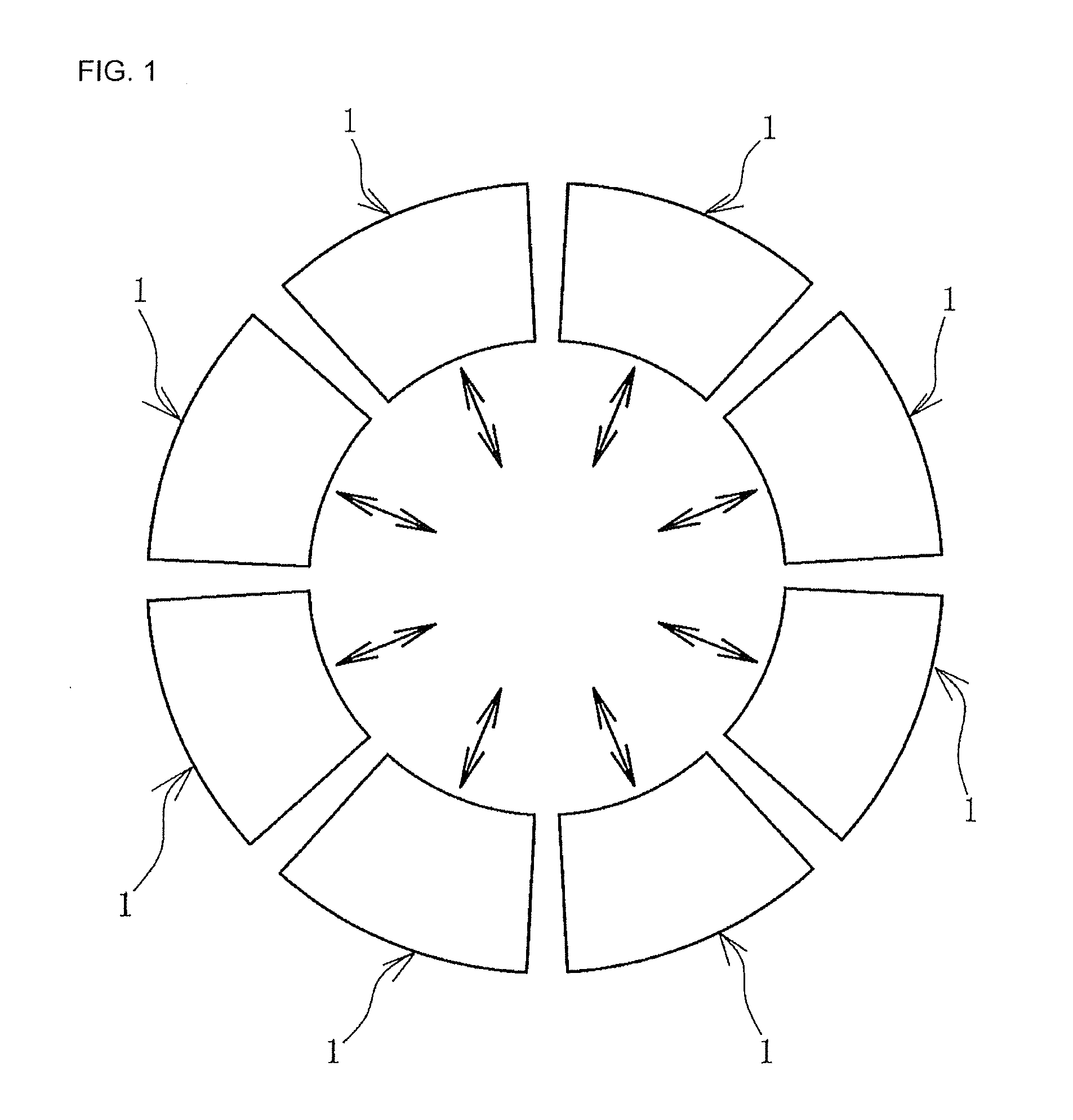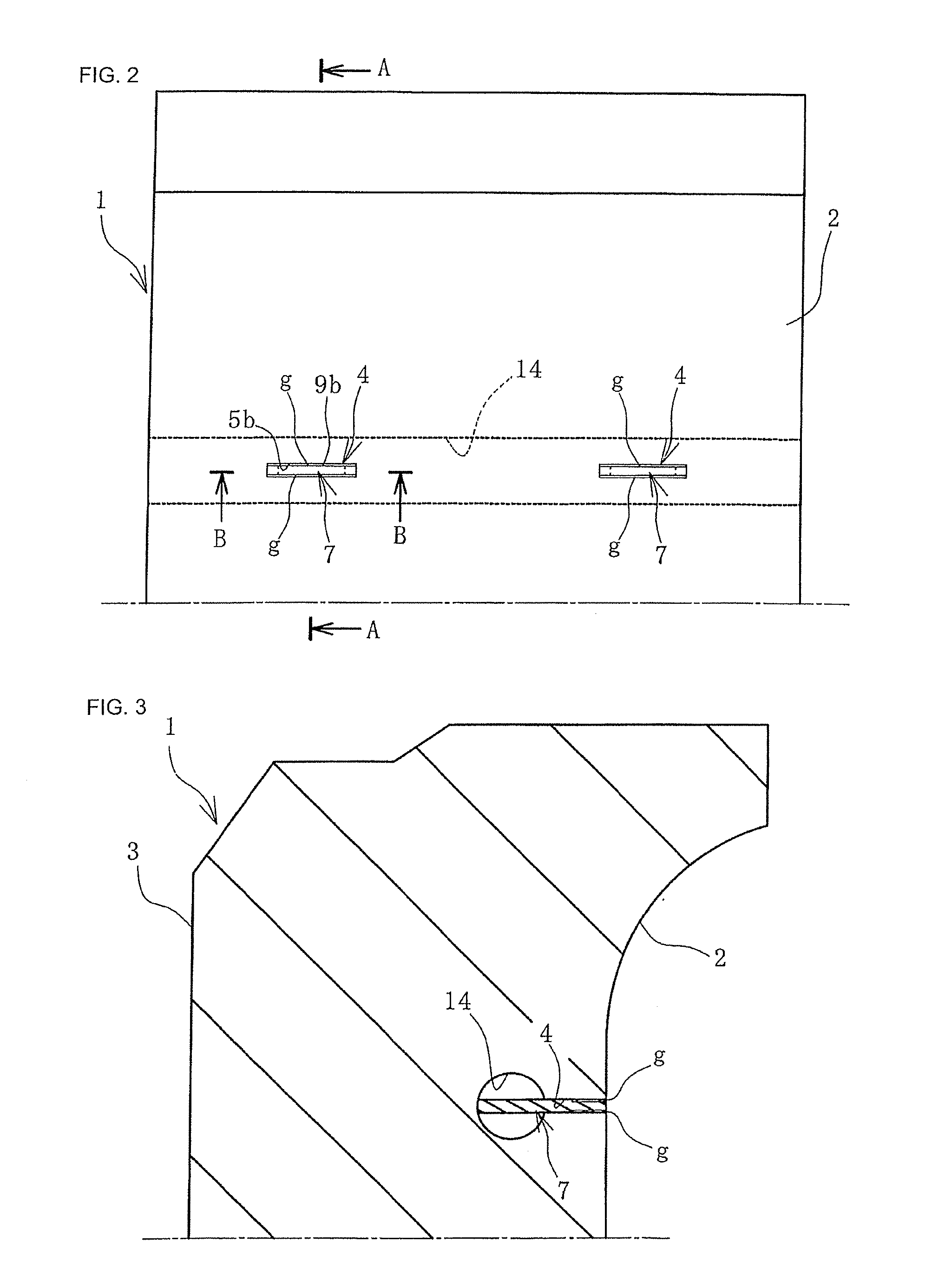Tire vulcanization mold
a vulcanization mold and tire technology, applied in the field of tire vulcanization molds, can solve the problems of insufficient rubber filling, vulcanization failure, unnecessary air trapped, etc., and achieve the effect of ensuring efficient and stable ventilation, and reducing the number of vulcanization failures
- Summary
- Abstract
- Description
- Claims
- Application Information
AI Technical Summary
Benefits of technology
Problems solved by technology
Method used
Image
Examples
Embodiment Construction
[0037]Selected embodiments of a tire vulcanization mold will now be explained with reference to the drawings. It will be apparent to those skilled in the art from this disclosure that the following descriptions of the embodiments are provided for illustration only and not for the purpose of limiting the invention as defined by the appended claims and their equivalents.
[0038]FIG. 1 shows a plurality of tire vulcanization molds 1 (hereinafter called “mold 1”) according to a disclosed embodiment. Each of the molds 1 in this example is a circular arc-shaped body and the molds 1 are attached together in an annular shape to form a sectional type mold. Each of the circular-arc shaped molds 1 toward and away from a center of the annular shape.
[0039]As shown in FIGS. 2 to 7, the molds 1 are made of aluminum or other material and have a tire molding surface 2 formed on an inner circumferential surface of the body 3 of the mold 1. A plurality of ventilation grooves 4 are formed in the tire mol...
PUM
| Property | Measurement | Unit |
|---|---|---|
| thickness | aaaaa | aaaaa |
| thickness | aaaaa | aaaaa |
| thickness | aaaaa | aaaaa |
Abstract
Description
Claims
Application Information
 Login to View More
Login to View More - R&D
- Intellectual Property
- Life Sciences
- Materials
- Tech Scout
- Unparalleled Data Quality
- Higher Quality Content
- 60% Fewer Hallucinations
Browse by: Latest US Patents, China's latest patents, Technical Efficacy Thesaurus, Application Domain, Technology Topic, Popular Technical Reports.
© 2025 PatSnap. All rights reserved.Legal|Privacy policy|Modern Slavery Act Transparency Statement|Sitemap|About US| Contact US: help@patsnap.com



